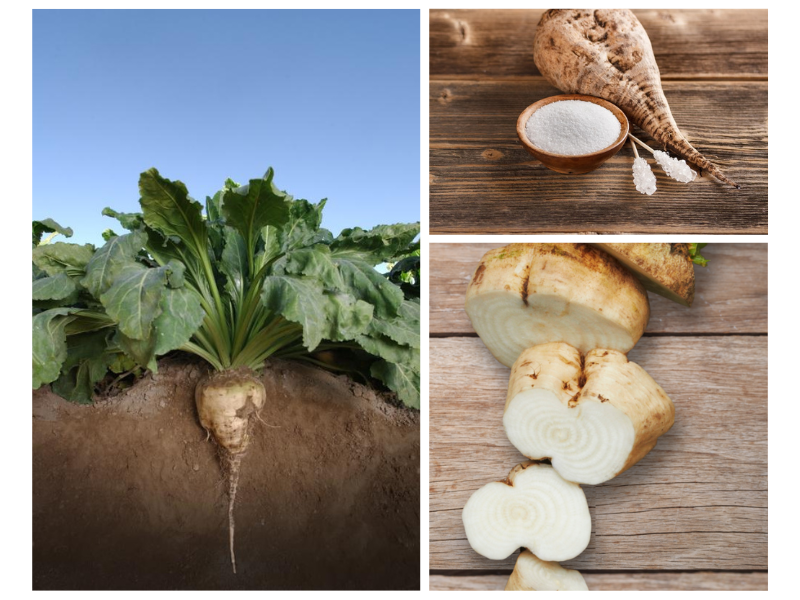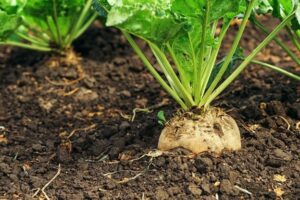Revealing the Fact Behind Sugar Beet Vs Sugar Cane: Benefits, Utilizes, and Processing Techniques Described
The distinction between sugar beet and sugar cane is usually ignored in conversations regarding sugar production. Each plant offers distinct advantages and applications in different markets. Their growing techniques and handling strategies also differ notably. Recognizing these subtleties is crucial for stakeholders in the sugar sector. What implications do these differences have for health, taste, and environmental impact? Discovering these elements can expose deeper insights right into the worldwide sugar market.

Review of Sugar Beet and Sugar Cane
Sugar beet and sugar cane are two primary resources of sugar, each with unique attributes and farming techniques. Sugar beet, a root vegetable, grows in temperate environments and is generally harvested in the autumn. Its high sugar material, ranging from 15% to 20%, makes it a useful plant for sugar manufacturing. The procedure entails drawing out juice from the beets, which is then fine-tuned right into granulated sugar.
In comparison, sugar cane is a tropical yard that thrives in warm, moist settings. It can accomplish a sugar content of as much as 14%, yet its tall, fibrous stalks call for considerable handling. The cane is squashed to draw out juice, which goes through boiling and condensation to generate sugar. Both sources contribute greatly to the global sugar supply, with sugar beet generally cultivated in Europe and North America, while sugar cane is chiefly grown in Brazil, India, and various other tropical areas.
Farming Practices: Sugar Beet vs. Sugar Cane
Cultivation methods for sugar beet and sugar cane differ substantially because of their unique growing problems. Sugar beetroots grow in cooler environments with well-drained dirt, while sugar cane favors warmer temperature levels and abundant moisture. Furthermore, the harvesting methods utilized for each and every plant show these environmental demands and affect overall return and quality.
Expanding Conditions Contrast
While both sugar beet and sugar cane thrive in details ecological conditions, their farming methods vary considerably. Sugar beet is largely grown in warm areas, preferring cooler climates with well-drained dirt and moderate rainfall. It calls for an expanding period of regarding 90 to 120 days, with suitable temperature levels between 15 ° C to 25 ° C. On the other hand, sugar cane embellishments in tropical and subtropical climates, prospering in cozy temperatures ranging from 20 ° C to 32 ° C. It requires plentiful sunlight and regular rains, typically needing watering in drier locations. Sugar cane has a much longer growing cycle, typically lasting 12 to 24 months. These differences in growing problems considerably influence the geographical distribution and farming practices related to each crop.
Harvesting Techniques Differences
The harvesting strategies for sugar beet and sugar cane mirror their distinct growth features and farming methods. Sugar beet is generally gathered mechanically, with harvesters created to uproot the entire plant, making certain minimal soil disturbance. The beets are then transported for handling soon after harvest to preserve quality. In comparison, sugar cane harvesting usually involves a combination of handbook and mechanical techniques. Employees might at first reduce the cane by hand, particularly in regions where automation is less feasible. Ultimately, specialized machinery is utilized to gather and transport the cut stalks to processing centers. These differing methods not just impact performance but additionally affect the quality and yield of the final sugar products, showcasing the flexibility of each plant to its environment.
Nutritional Contrast and Health And Wellness Conveniences
When comparing the nutritional profiles of sugar beet and sugar cane, it ends up being clear that each offers distinctive health and wellness advantages. Sugar beetroots are rich in crucial nutrients like folate, manganese, and potassium, which add to overall health and wellness. They also have fiber, which assists food digestion and might help control blood sugar degrees. Furthermore, sugar beets are recognized for their antioxidant properties, which can fight oxidative stress.
On the other hand, sugar cane is mainly made up of sucrose, providing fast power. While it does not have the very same level of minerals and vitamins discovered in sugar beets, sugar cane does contain percentages of B vitamins and minerals such as calcium and magnesium. Furthermore, sugar cane juice is commonly touted for its hydrating residential properties and prospective health advantages, consisting of boosted gastrointestinal health. Eventually, the option between sugar beet and sugar cane may depend upon specific health and wellness objectives and nutritional choices.
Flavor Accounts and Culinary Uses
Flavor profiles of sugar beet and sugar cane vary substantially, influencing their culinary applications (Sugar beet vs sugar cane). Sugar cane, with its naturally pleasant and complex taste, is frequently favored in beverages, treats, and different cooking meals. It provides a rich, caramel-like note that improves the preference of products such as syrups, molasses, and rum. In comparison, sugar beet has a more neutral and less aromatic preference, making it ideal for applications where sweet taste is wanted without modifying the meal's integral tastes. It is regularly made use of in refined foods, baked items, and sweeteners
Cooking specialists typically pick sugar cane for its deepness and richness, especially in exquisite food preparation and craft drinks. On the other hand, sugar beet's flexibility as a sweetener in mass-produced items caters to a wider market. Inevitably, the selection between these two sugars can significantly affect taste accounts and overall cooking experiences.
Ecological Effect of Sugar Production
Sugar manufacturing, whether from sugar beet or sugar cane, brings significant environmental ramifications. Sugar cane farming frequently leads to deforestation, especially in tropical regions, interrupting neighborhood ecosystems and contributing to biodiversity loss. The considerable use fertilizers and chemicals in both sugar beet and sugar cane farming can result in soil degradation and water air pollution, impacting surrounding environments and communities. Additionally, the high water usage needed for sugar cane irrigation postures a danger to local water products, particularly in arid areas.
On the other hand, sugar beet farming normally occurs in temperate environments, which might minimize some logging worries. However, it is not without its very own difficulties, including dirt disintegration and dependence on chemical inputs. Generally, the ecological impact of sugar production is complex, requiring lasting farming practices and click resources understanding of source monitoring to lessen damages to communities and promote ecological health and wellness.
Processing Methods: From Plant to Sugar
Many handling techniques are utilized to change sugar beet and sugar cane right into granulated sugar, each technique mirroring the one-of-a-kind qualities of the source plant. For sugar beets, the process begins with washing and slicing the roots right into slim strips, which are after that based on diffusion-- a method where hot water essences sugar from the beet pieces. The resulting fluid is cleansed, focused, and crystallized.
In contrast, sugar cane handling involves crushing the stalks to remove juice, followed by clarification to get rid of impurities. The juice is then evaporated, leading to syrup that goes through formation. Both procedures are complied with by separation of the sugar crystals from the molasses, which is a byproduct. The lasts include drying and packaging the granulated sugar for distribution. These strategies highlight the distinct pathways through which these two plants generate sugar, each with its very own set of difficulties and effectiveness.
Financial Elements of Sugar Beet and Sugar Cane Industries
The financial landscape of the sugar beet and sugar cane industries exposes significant differences in manufacturing costs, market characteristics, and local impacts. Sugar beet, mostly expanded in pleasant climates, typically sustains greater manufacturing prices as a result of labor and input expenses. On the other hand, sugar cane flourishes in tropical areas, usually gaining from lower labor prices and positive climatic conditions, which can cause higher returns.
Market dynamics also differ, as sugar cane dominates international manufacturing, making up around 80% of sugar outcome. This frequency influences prices frameworks and trade circulations. In contrast, sugar beet is more regionally concentrated, specifically in Europe and The United States and Canada, influencing local economic situations dependent on beet manufacturing.
Moreover, changes in international sugar costs can considerably influence both industries, affecting farmer income and financial investment levels. Recognizing these economic aspects is important for stakeholders aiming to browse the complexities of the sugar market properly.

Often Asked Inquiries

Can Sugar Beet and Sugar Cane Be Intercropped Effectively?
Intercropping sugar beet and sugar cane presents obstacles due to differing growth demands and environmental demands. Nonetheless, with cautious administration and ideal browse around these guys problems, it might generate benefits such as improved soil health and resource effectiveness.
What Are the Historical Origins of Sugar Beet and Sugar Cane?
The historic beginnings of sugar beet trace back to 18th century Europe, while sugar cane has roots in Southeast Asia, cultivated for countless years. Both plants have actually substantially affected international sugar manufacturing and agriculture.
How Do Sugar Beet and Sugar Cane Affect Dirt Health And Wellness?
The results of sugar beet and sugar cane on soil health and wellness differ. Sugar beet can boost soil structure and nutrient content, while sugar cane may diminish nutrients otherwise taken care of properly, affecting long-lasting soil fertility.
Exist Any Kind Of Emerging Technologies in Sugar Production?
Arising innovations in sugar production include precision agriculture, advanced hereditary design for higher yields, and cutting-edge removal techniques. These improvements intend to boost effectiveness, lower ecological impact, and enhance the overall sustainability of sugar production procedures.
What Are the Secret Distinctions in Labor Needs for Both Crops?
The crucial distinctions in labor demands for sugar beet and sugar cane lie in growing, harvesting, and handling. Sugar beet vs sugar cane. Sugar beet usually requires even more automation, while sugar cane usually requires a lot more manual work for harvesting and look what i found refining stages